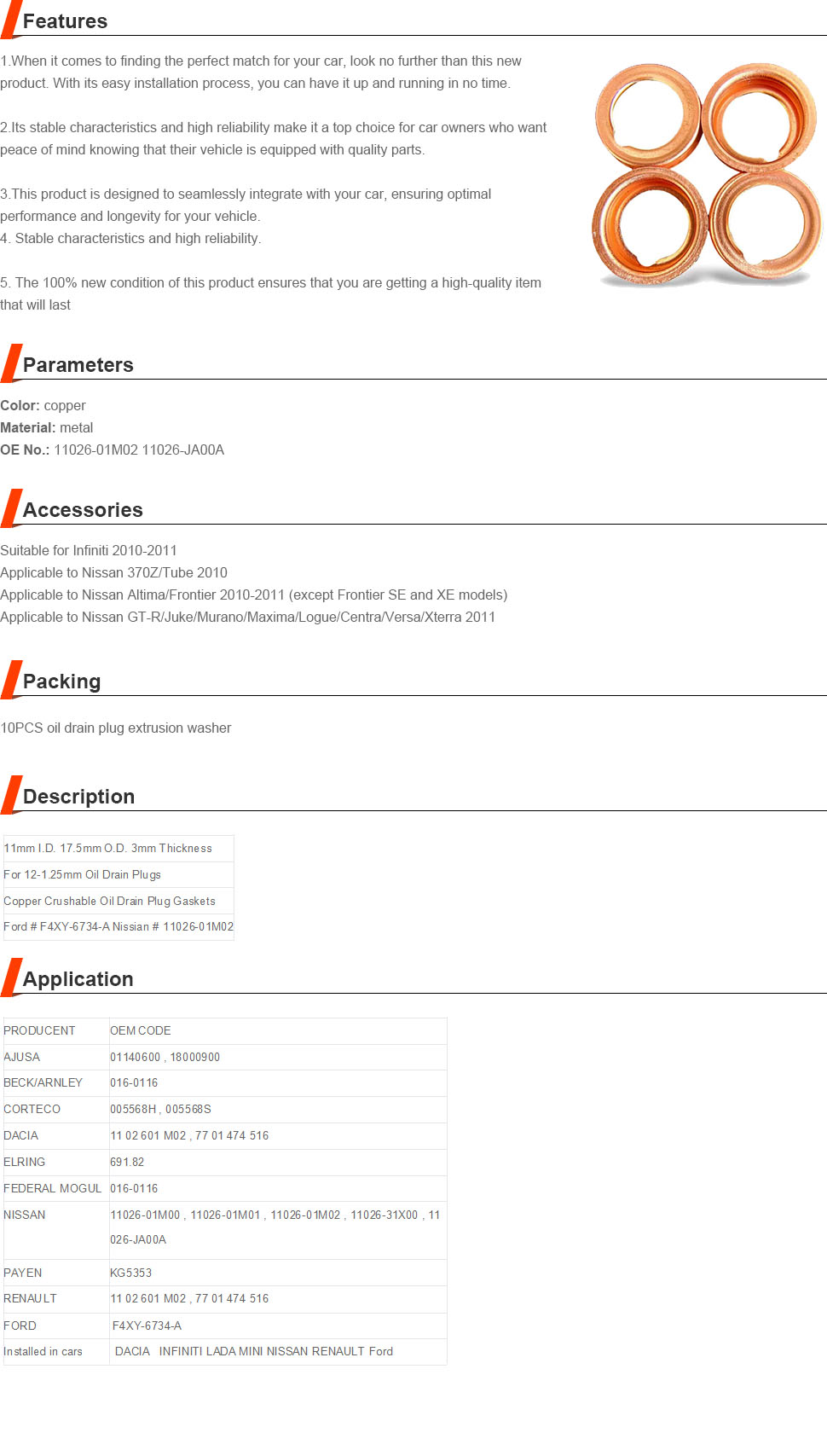Understanding the Importance of Automobile Oil Seals for Engine Performance and Maintenance Strategies
The Importance of Automobile Oil Seals
In the intricate world of automobile mechanics, every component plays a pivotal role in ensuring optimal performance and longevity. One often overlooked yet crucial component is the oil seal. Also known as a shaft seal or oil retaining seal, the oil seal's primary function is to prevent oil leakage and contamination while maintaining the integrity of the internal lubrication system. This article will delve into the significant roles, types, and maintenance of automobile oil seals.
The Role of Oil Seals
Oil seals serve multiple purposes in the automotive engine and drivetrain. Primarily, they prevent lubricating oils from leaking out of the engine and other components, which is essential for preventing wear and tear. Without effective seals, oil would escape from places like the crankshaft and camshaft, leading to inadequate lubrication and potentially catastrophic engine damage.
Moreover, oil seals protect essential internal components from external contaminants, such as dust, dirt, and moisture. The introduction of these unwanted particles can lead to abrasive wear and engine failure. Consequently, oil seals act as barriers that maintain a clean and lubricated environment within various automotive systems.
Types of Oil Seals
Automobile oil seals come in various designs and materials, tailored to specific applications and conditions.
1. Rubber Oil Seals These are the most common type and made from materials like Nitrile or Viton. They are suitable for most automotive applications due to their excellent resistance to temperature and various chemicals.
automobile oil seal

2. Metal-Cased Seals These oil seals combine the sealing properties of rubber with the durability of metal. They are often used in high-performance applications where higher pressures and temperatures are present.
3. PTFE Seals Known for their low friction properties, PTFE (polytetrafluoroethylene) seals are used in applications where there is significant movement or rotation, making them ideal for certain engine and transmission components.
4. Spring-Loaded Seals These seals include a spring that exerts pressure against the sealing surface, ensuring a tight fit and preventing leaks even in high-movement environments.
Maintenance and Replacement
Regular maintenance is crucial to ensure that oil seals function properly. A vehicle should be routinely inspected for signs of oil leaks around the seals, particularly during oil changes. If a leak is noticed, it is essential to address the issue immediately. Ignoring a leaking oil seal can lead to more extensive engine damage and costly repairs down the line.
Replacing oil seals is a job that can vary in complexity depending on the vehicle make and model. In some cases, it may require disassembling significant components like the engine or transmission. Therefore, it is often advisable to seek professional help for replacement unless you have mechanical experience.
Conclusion
Oil seals may seem like small components in the vast array of automobile parts, but their significance cannot be overstated. They play an essential role in maintaining oil integrity, protecting internal components from contamination, and ultimately ensuring the efficiency and longevity of automotive engines and systems. Regular inspection and timely replacement of oil seals are vital practices for any vehicle owner, safeguarding against potential mechanical failures and enhancing the overall performance of their automobile. As technology continues to evolve, the design and materials used for these seals will also improve, ensuring more reliable and efficient protection for vehicles in the future.
-
Understanding Cassette Seals: A Durable Solution for Oil and Dirt Protection
News Apr.30,2025
-
Understanding and Maintaining the Polaris Ranger Front Differential
News Apr.30,2025
-
Understanding and Maintaining the Polaris Front Differential
News Apr.30,2025
-
Understanding and Maintaining the Crank Oil Seal for Engine Efficiency
News Apr.30,2025
-
Heavy Duty Seals: Durable Solutions for Home, Industrial, And Commercial Use
News Apr.30,2025
-
Auto Oil Seals: Protecting Your Engine from Leaks and Contamination
News Apr.30,2025
-
Essential Tools and Kits Every Car Owner Should Have
News Apr.29,2025
Products categories















